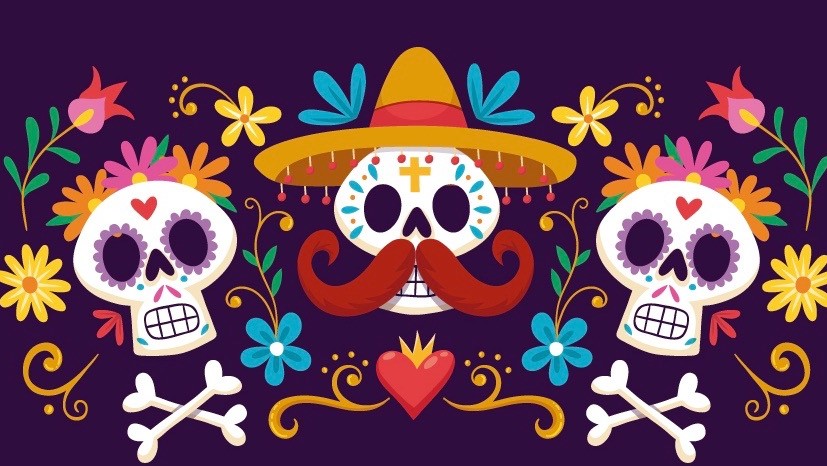Of course, we know that Día de Muertos is the time of year when we welcome back our deceased loved ones!
That’s why many of us dedicate a table to candles, photos and calaveras. And some of us choose to join community celebrations where we paint our faces with gorgeous versions of the Catrina.
But here are some facts I bet you didn’t know about this festive holiday! There’s a guideline to follow on the days leading up to November 2nd.
In late October: Set up your altar, or ofrenda, and make it as ornate or simple as you like.
On Oct. 28: Light the first candle and place a white flower on the altar in honor of souls who travel back alone.
On Oct. 29: Light another candle and put out a glass of water in honor of the deceased spirits who don’t have family to receive them.
On Oct. 30: Light another candle, put out another glass of water and add a loaf of bread (or pan de muerto) for those spirits who were called before their last meal, and those whose demise was a result of an accident.
On Oct. 31st: Of course, prepare yourself with treats for kids who will knock at your door, and also light another candle or veladora, add another glass of water and a piece of fruit to your altar. This is to honor your ancestors (great-great-grandparents whose names you may not even know!)
November 1st is day of the innocents, (All Saints Day). This is when you place all the food you will have on your altar, including delicacies for your departed ones to find. Don’t forget extra sweets for the children!
November 2nd, the big day! This is when all the adult spirits follow the scent of the cempasúchil flowers and incense, the light of the veladoras and the sound of their favorite music that you’re blasting. They arrive to enjoy the foods you’ve set out for them, and hear you retell stories of their lives with so much cariño and laughter.
November 3rd is when you light the last candle, burn copal and say goodbye to any stragglers so they can head back to the beyond until next año!




